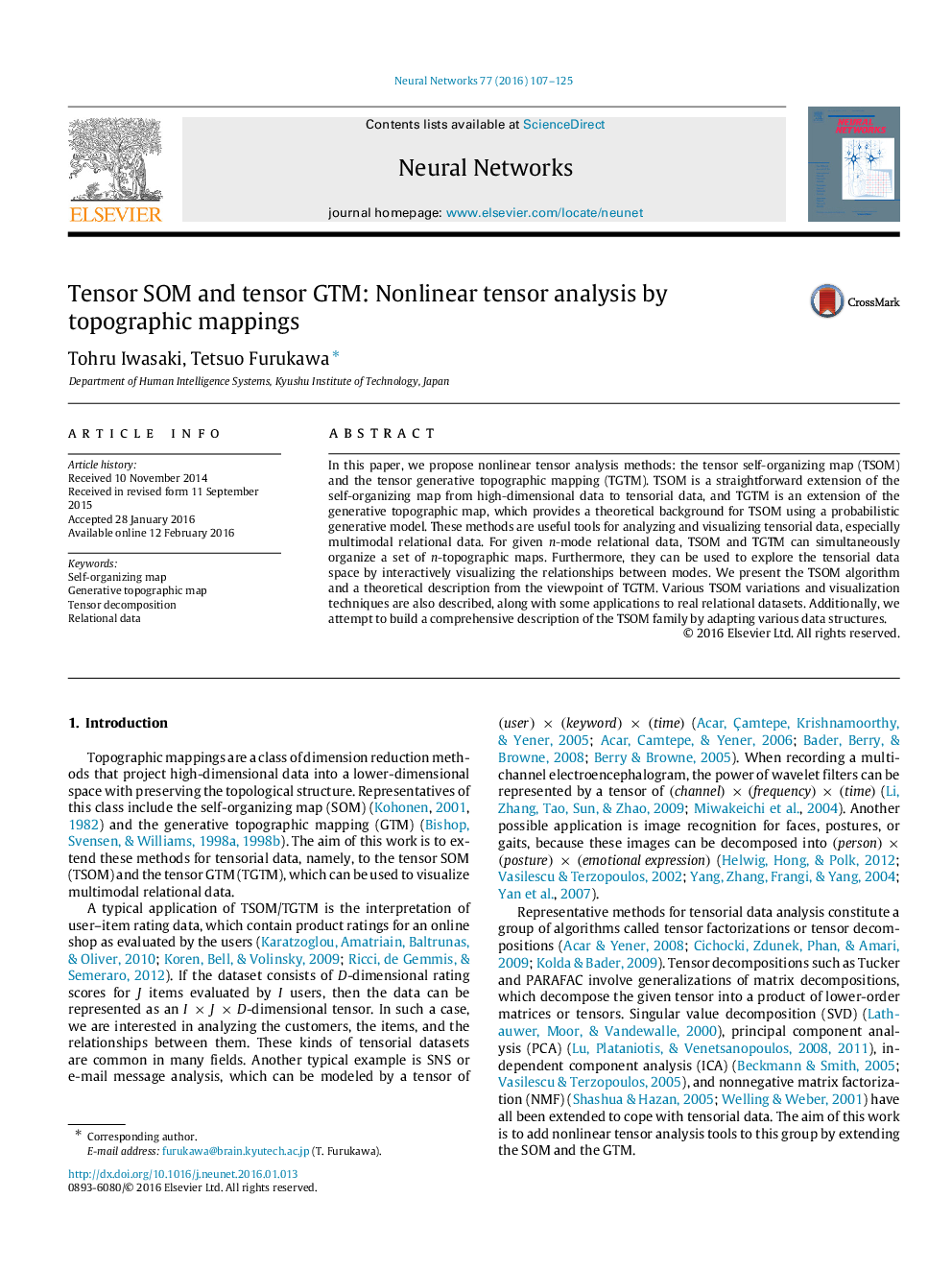| Article ID | Journal | Published Year | Pages | File Type |
|---|---|---|---|---|
| 404045 | Neural Networks | 2016 | 19 Pages |
In this paper, we propose nonlinear tensor analysis methods: the tensor self-organizing map (TSOM) and the tensor generative topographic mapping (TGTM). TSOM is a straightforward extension of the self-organizing map from high-dimensional data to tensorial data, and TGTM is an extension of the generative topographic map, which provides a theoretical background for TSOM using a probabilistic generative model. These methods are useful tools for analyzing and visualizing tensorial data, especially multimodal relational data. For given nn-mode relational data, TSOM and TGTM can simultaneously organize a set of nn-topographic maps. Furthermore, they can be used to explore the tensorial data space by interactively visualizing the relationships between modes. We present the TSOM algorithm and a theoretical description from the viewpoint of TGTM. Various TSOM variations and visualization techniques are also described, along with some applications to real relational datasets. Additionally, we attempt to build a comprehensive description of the TSOM family by adapting various data structures.
